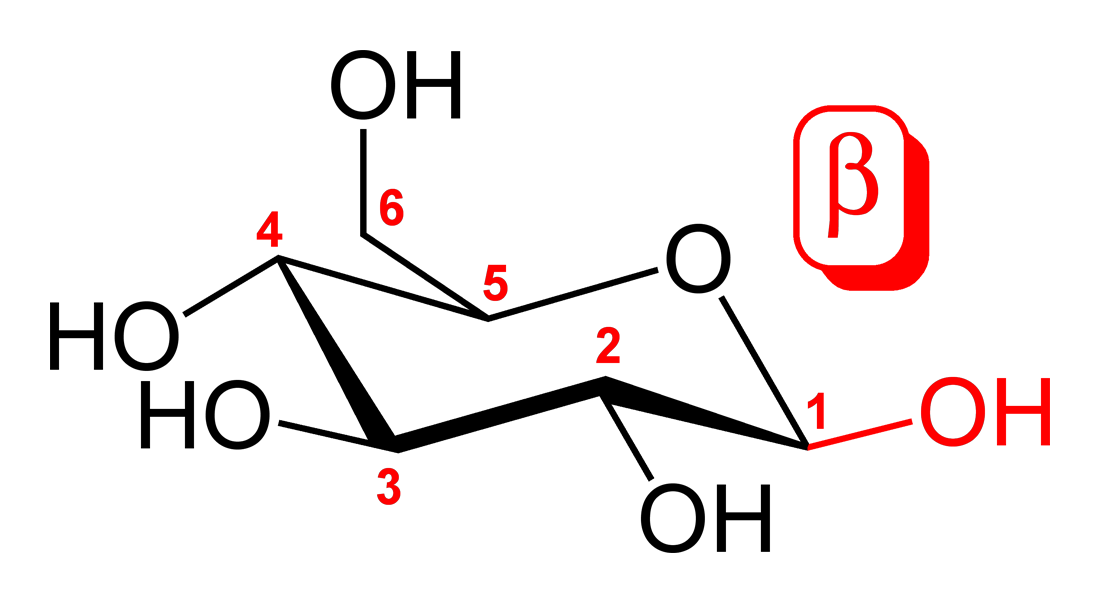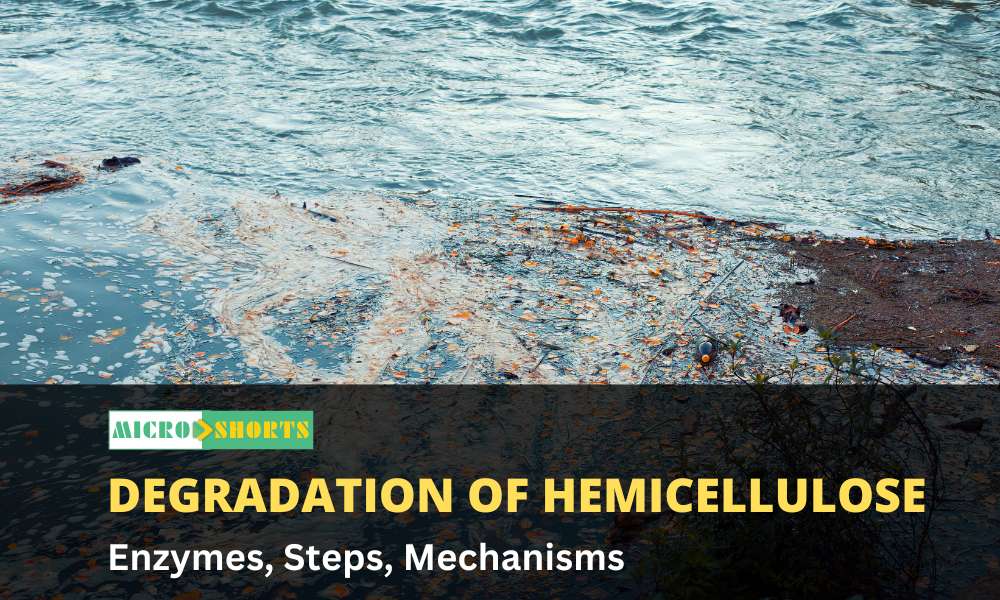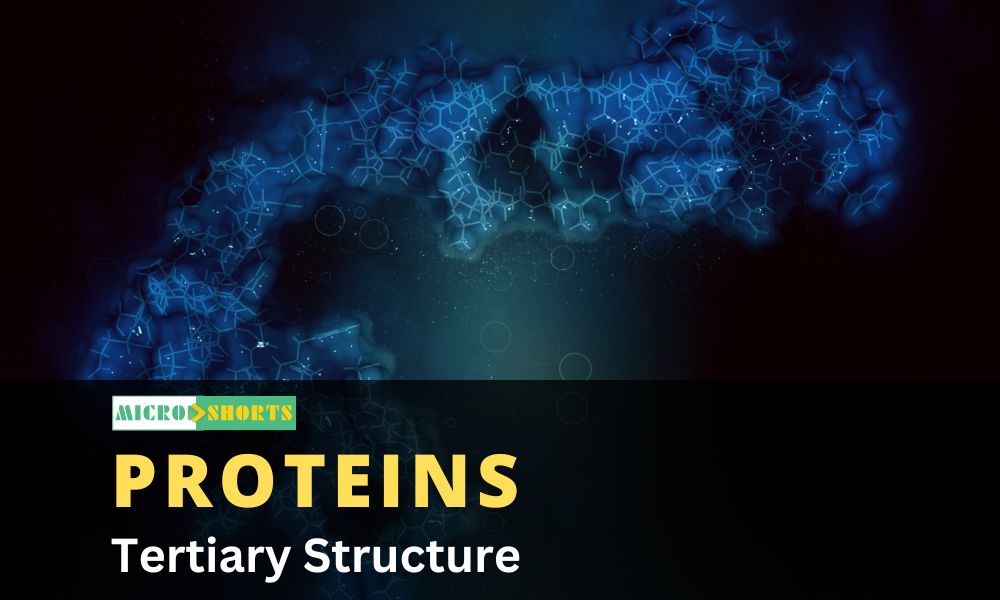What is hemicellulose?
Hemicellulose is a group of complex polysaccharides that are
found in the fibers of plants along with other polysaccharides
like cellulose and pectin.
- Hemicellulose
consists of a heterogeneous group of carbohydrates where the structures of
these carbohydrates are not clearly understood.
- The
structures and physicochemical properties of polysaccharides are very
different from each other.
- Hemicelluloses
are not structurally related to cellulose, nor do they contain the same
building blocks but they are partially soluble in water or alkali.
- Hemicelluloses
are mostly mixed polymers, whereas cellulose is a homopolymer of glucose.
- Apart from arabinogalactan, all other hemicelluloses have short side-chains and low molecular weights.

- The
hemicelluloses consist of either pentose (xylose, arabinose) or hexoses
(glucose, mannose, galactose) as well as uronic acids.
- These
polysaccharides adsorb water nd function as storage and supporting
substances in plants.
- The
term ‘hemicelluloses’ is however archaic and various researchers have
suggested that it should not be used.
- Alternative
terms such as cross-linking glycans have been proposed, but that has other
problems since it is not apparent that cross-linking is a major and common
feature of the hemicelluloses. This is why the term hemicellulose is still
in use.
- Hemicelluloses
are grouped into groups that include xyloglucan, xylans, mannans and
glucomannans, and β-(1→3, 1→4)-glucans.
- These
glycans all have the same equatorial configuration at C1 and C4, and hence
the backbones have significant structural similarity.
- Xylan
is the representative polysaccharide of this group that is composed of a
backbone of β-(1→4)-linked xylose residues. Xylans are also the most
abundant carbohydrates after cellulose.
Structure of hemicellulose

Hemicelluloses consist of 50–3000 sugar units as opposed to 7000–15,000 glucose molecules per polymer in cellulose. Hemicellulose is amorphous in structure, not crystalline as cellulose, and therefore more susceptible to hydrothermal extraction and hydrolysis. Hemicelluloses are classified into different groups as xylans, mannans, and glucans on the basis of the primary sugar residue in the backbone.
Xylans
- Xylans
are a group of polysaccharides consisting of β-(1→4)-linked xylose sugar
residues with side branches of α-arabinofructose and α-glucuronic acids
that contribute to the cross-linking of cellulose.
- Xylans
are categorized into three classes; glucoronoxylan, arabinoxylan, and
glucoronoarabinoxylans.
- Xylans
does not have a repeated structure, and many variations in the structure
are not well known.
- A
common feature of xylans is the O-2 linked xylose residues often found as
substituents of feruloylarabinofuranosyl side chains.
- Most
xylans are acetylated to various degrees, especially in dicot secondary
walls. Acetyl groups are attached to O-3 of xylose residues and to a
lesser extent to O-2.
Mannans
- Mannans
are a group of β-(1→4)-linked polysaccharides where the backbones consist
entirely of mannose units.
- Mannans
have been much studied as a result of their role as seed storage
compounds, but they are found in variable amounts in all cell walls.
- Mannnas
in yeast consists of α-(1→6)- linked backbone and α-(1→2) and α-(1→3)
linked branches.
Glucans
- Glucans
are polysaccharides composed of glucose units linked by glycosidic bonds.
Glycans in hemicellulose are either xyloglucans or β-(1→3,1→4)-glucans.
- Xyloglucans
are polysaccharides consisting of β-(1→4)-linked glucan units substituted
with xylose molecules.
- β-(1→3,1→4)-glucans
are β-(1→4)-linked glucans with interspersed singleβ-(1→3)-linkages.
- These
mixed linkage glucans are dominated by cellotriosyl and cellotetrasyl
units linked by β-(1→3) linkages, but longer β-(1→4)-linked segments also
occur.
What are hemicellulases?
Hemicellulases are a group of enzymes that specifically
degrade only hemicelluloses which, in addition to their activity on glycosides,
are also frequently capable of hydrolyzing the short-chain or monosaccharide
chains from the backbone chain of hemicelluloses.
- The
variable structure and organization of hemicellulose require the combined
action of many enzymes for its complete degradation.
- The
catalytic modules of hemicellulases are either glycoside hydrolases (GHs)
that hydrolyze glycosidic bonds, or carbohydrate esterases (CEs), which
hydrolyze ester linkages of acetate or ferulic acid side groups.
- Hemicellulases
are an important group of enzymes involved in the global carbon cycle
where they are a part of the natural waste recycling system.
- Hemicellulases
are categorized into four different groups depending on the substrate and
linkages they act on; L-arabinanases, D-galactanases, D-mannanases, and
D-xylanases.
- Some
of these enzymes might even differ in structure and their mode of action.
- Different
hemicellulases might even be produced by a different group of organisms
like bacteria, fungi, protozoans, algae, and plants.
Microorganisms involved in hemicellulose degradation
Hemicellulolytic fungi
- Fungi
are among the most active agents of decomposition of organic matter in
general, and thus, these microorganisms are the most important group of
hemicellulolytic microorganisms.
- Aerobic
fungi, such as the fungi Trichoderma and Aspergillus,
secrete at high concentrations a large variety of hemicellulases that work
synergistically.
- The
source of hemicellulases also depends on the type of hemicellulases
produced by the microorganisms.
- Besides,
other saprophytic fungi like Alternaria solani, Botryosphaeria
ribis, Botrytis allii, Corticium centrifugum, Monilia fructigena,
Neurospora, Penicillium digitatum, Rhizopus nigricans, Sclerotinia
fructigena, etc. are known to produce L-arabinanases and D-mannanases.
- Similarly,
fungi like Gibberella saubinetti, Helminthosporium oryzae,
Phytophthora infestans, Trametes gibbosa, etc. produce D-galactanases.
- Fungal
species found in the marine environments, including Aspergillus
sojae, Chaetomium globosum, Agaricus bisporus, Diplodia viticola, Oxiporus,
etc. are also considered important sources of hemicellulases.
- Most
of the hemicellulases are extracellular with some intracellular
hemicellulases.
Hemicellulolytic bacteria
- Bacteria
also produce different types of hemicellulases either as a singular enzyme
or as a multi-enzyme system.
- Most
of the bacterial cellulolytic enzymes are reported from Clostridium
felsineum, Bacillus subtilis, Acetenobacter mannanolyticus, Bacillus
aroideae, Sporocytophaga myxococcoides, etc.
- Besides,
rumen bacteria found in various ruminant mammals are also known to produce
hemicellulases.
- Some
examples include Streptococcus sp., Butyrivibrio fibrisolvens,
Ruminococcus albus, Bacteroides ruminicola, etc.
Enzymes involved in the degradation of hemicellulose
Hemicellulases are generally classified into four distinct
groups; L-arabinanases, D-galactanases, D-mannanases, and D-xylanases.
L-arabinanases
- L-Arabinanases
are hydrolytic enzymes capable of degrading L-arabinans, including both of
the α-(1→3)-linked L-arabinofuranosyl appendages of the L-arabinan, and the
α-(1→5)-linked L-arabinofuranosyl residues of the “linear” chain.
- L-Arabinanases
have been reported to be produced by the bacterium Clostridium
felsineum var. sikokianum, saprophytic and phytopathogenic fungi,
the snail, and plants.
- Rumen
bacteria and protozoa and caecal bacteria also produce enzymes capable of
liberating L-arabinose from arabinoxylans and are probably
a-L-arabinofuranosidases.
- Most
L-arabinanases of fungal origin are usually secreted extracellularly into
the medium in which the organism is grown, but intracellular
L-arabinanases have also been found to exist.
- Several
phytopathogenic fungi are known to produce L-arabinanases by induction
when grown on media supplemented with L-arabinan, and constitutively when
these organisms were grown on D-glucose as the sole carbon source.
D-galactanases
- D-galactanases
are hydrolytic enzymes capable of degrading D-galactans and
L-arabino-D-galactans.
- Two
distinct types of D-galactanases are known that are specific for (13) and
(14)-β-D-galactopyranosyl linkages.
- Both
enzymes are able to degrade D-galactan randomly, to afford D-galactose and
D-galactooligosaccharides, and they are therefore endo-D-galactanases.
- D-Galactanases
have been reported to be produced by Bacillus subtilis, by a rumen
anaerobic bacterium, by fungi, and by plants.
- D-Galactanases
are inductive, and those of microbial origin are usually produced
extracellularly in response to the carbon source of the culture medium.
D-Mannanases
- D-mannanases[(
14)-β-D-mannan mannanohydrolases, endo-D mannanases) are hydrolytic
enzymes capable of hydrolyzing the (14)-β-D-mannopyranosyl linkages of
D-mannans and D-galacto-D-mannans.
- These
enzymes are capable of degrading the D-gluco-D-mannans, D-glucose,
D-mannose, and a series of manno- and glucomanno-oligosaccharides.
- D-Mannanases
have been reported to be produced by various species of bacteria,
including bacteria from human intestines and the rumen.
- Other
sources include the rumen protozoa, various fungi (including saprophytic,
phytopathogenic, and mycorrhiza fungi), marine algae, germinating
terrestrial plant-seeds, and various invertebrates.
β-D-xylanases

- β-D-xylanases
are hydrolyzing enzyme that degrades β-D-xylans into D-xylose or D-xylose
and D-xylo-oligosaccharides.
- Xylanases
are of two types that degrade either the (13) linkages and (14) linkages.
- D-Xylanases
are known to occur in bacteria from marine and terrestrial environments,
fungi (saprophytes, phytopathogens, and mycorrhiza), rumen bacteria and
protozoa, ruminant caecal bacteria, insects, snails, crustaceans, marine
algae, and germinating seeds of terrestrial plants.
Factors affecting hemicellulose degradation
Degradation of hemicelluloses is affected by a number of factors, some of which are:
Temperature and pH
- Temperature
and pH both affect the rate of hydrolysis of hemicelluloses. The highest
rate of hydrolysis is achieved at pH 6 and 40°C.
- The
increase of reaction temperature above 40°C has a negative impact on total
xylose production as the temperature probably affects the stability of
hemicellulolytic enzymes.
Organic matter
- The
presence of organic matter also increases the rate of hemicellulose
degradation as much of the organic matter act as a substrate.
- However,
if hemicellulose is the only component of the matter, the rate of
hydrolysis decreases.
- The
rate of degradation increases with the addition of a small amount of
readily decomposable organic matter as it allows the growth of
microorganisms.
Dosage of enzymes
- The
increase in enzyme concentration also increases the rate of hemicellulose
degradation.
- The
increase in enzyme concentration increases the number of active sites
which subsequently increases the product concentration.
Substrate conversion
- The
xylose and arabinose production rates decrease rapidly after a few hours
of the enzymatic hydrolysis reaction.
- The
percentage of arabinose content released during hydrolysis remains
significantly lower than the percentage of xylose produced at the same
time.
- The
sudden fall of the hydrolysis rate is attributed rather to the
increasingly limited structural accessibility of the cell wall matrix to
enzymes as hydrolysis proceeds than to enzymes’ properties.
Process of hemicellulose degradation
The process of hemicellulose degradation is more or less
similar to that of homopolymers like cellulose. In the case of hemicelluloses,
however, one of the two pathways are followed to obtain the monomeric units.
- The
degradation begins with the attack by exoglycocides on the hemicelluloses
in order to remove the side-chain substituents, hereby, ‘opening up’ or
exposing the backbone glycan chain. This first step allows the glycan
chain to be exposed so that it can be easily attacked by the
hemicellulases, as a steric hindrance by the side chain residues is
reduced.
- Alternatively,
the degradation begins with the attack of endohemicellulases on the
regions of glycan chain that are unbranched or relatively moderately
branched by substituents. It is then followed by the action of
endohemicellulases which yields an array of oligosaccharides of a mixed
constitution. Both exoglycosidases and endohemicellulases further degrade
the resulting fragments.
Mechanisms of microbial degradation of hemicellulose
The mode of action or the mechanism of microbial degradation
can only be explained when the enzyme preparations used are homogenous, i.e. a
single protein component. The mechanism of microbial degradation is different
with different hemicellulases.
Xylanases
- D-xylanases
of the endo enzyme type is the only xylanases that have been properly
characterized.
- These
xylanases hydrolyze the 1, 4-β-D-xylopyranosyl linkages of D-glycans such
as L-arabino-D-xylans, L-arabino-D-glucoro-D-xylans, and
D-glucorono-D-xylans.
- Some
of these enzymes might even hydrolyze the (13)-α-L-arabinofuranosyl branch
points of arabinoxylan.
- Another
group of endo xylanases degrades arabinoxylan and other D-xylans to
D-xylose, D-xylooligosaccharides, and in some cases, oligosaccharides
containing both L-arabinose and D-xylose.
Example
Bacteria xylanases
- Bacterial
xylanases are produced by bacteria like Bacillus and Streptomyces.
- The
xylanase preparation from the alkalophile Bacillus degrades arabinoxylan
to xylobiose and xylotriose as major end products with smaller amounts of
higher xylooligosaccharides.
Mannanases
- Mannanases
of both the exo and endotypes have been characterized that hydrolyze
1,4-β-D-mannopyranosyl linkages of branched mannans, copolymer mannans,
and linear D-mannans.
- The
endo-β-mannanases degrade β-D-mannans to D-mannose and a series of mannose
oligosaccharides.
- On
acid hydrolysis, the enzymic degradation with a β-D-mannosidase yields
D-mannose as the only hydrolysis product.
- The
preferential attack of endomannanases is on the D-mannose chain at the 3rd
and 4th linkages from the nonreducing end of the molecule.
Example
Fungal mannanases
- D-Mannanases
of fungal origin have been known to degrade D-mannans in a random manner,
and to be of the endotype.
- Mixed
oligosaccharides resulting from enzymatic hydrolysis of
galactoglucomannans are likely to contain D-galactose in addition to
D-glucose and D-mannose.
Galactanases
- Galactanases
are hydrolytic enzymes that degrade D-galactans and L-arabino-D-galactans.
- Two
distinct types of endogalactonases are recognized with a single exo type.
- Endogalactanases
degrade the 1,4-β-D-galactosyl linkages of D-galactans randomly to produce
D-galactose and galactose oligosaccharides, some of which might contain
L-arabinose residues.
Example
Fungal galactonases
- D-galactanases
produced by Rhizopus sp. do not act on galactobiose as it is specific only
to (13)-β-D-galactopyranosylinkages.
- The
enzymes are also capable of removing L-arabinofuranose from
arabinogalactosides but do not liberate any L-arabinose from
oligosaccharides.
Arabinanases
- The
action of the L-arabinanae as an endoenzyme yields L-arabinose and an
L-arabinose oligosaccharide as major products of hydrolysis.
- Besides,
smaller proportions of L-arabinose disaccharides may even be formed.
- L-arabinan-degrading
enzymes of the exo-type degrade L-arabinan completely to L-arabinose.
- These
enzymes hydrolyze both the (13) and (15)-α-L-arabinofuranosyl residues of
L-arabinan.
- Arabinanases
hydrolyze both types of linkage of L-arabinan at one active site, and the
substrate is attacked from the nonreducing end by a multi-chain mechanism.
- In
its attack on L-arabinan, it hydrolyzes the substrate rapidly to the
extent of 30%; thereafter, the attack is slow.
- This initial, rapid hydrolysis of L-arabinan corresponds to the favored attack on the (α-L-(13)-linked L-arabinofuranosyl residues, leaving a mainly linear (15)-α-L-arabinan which is slowly, and eventually, completely, hydrolyzed to L-arabinose.











Comments